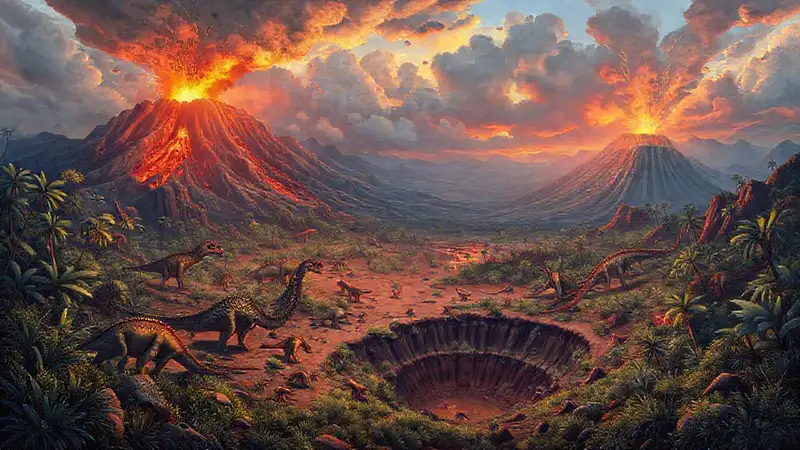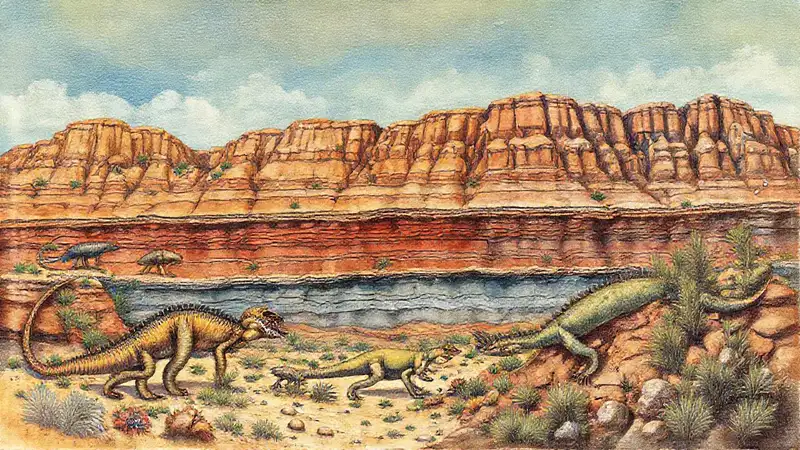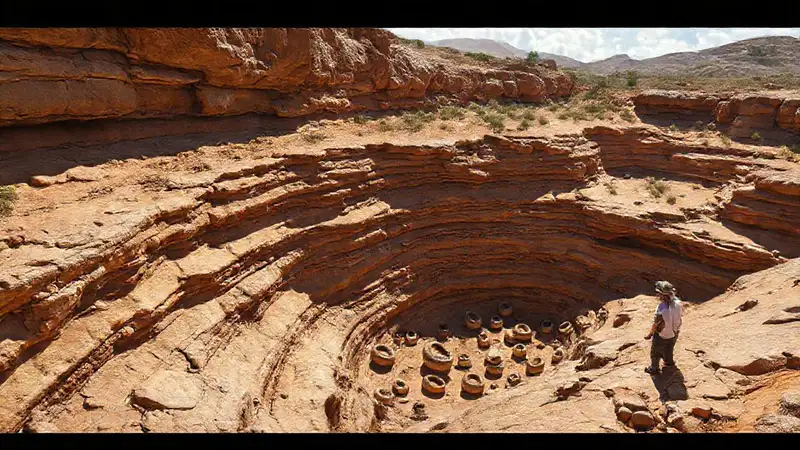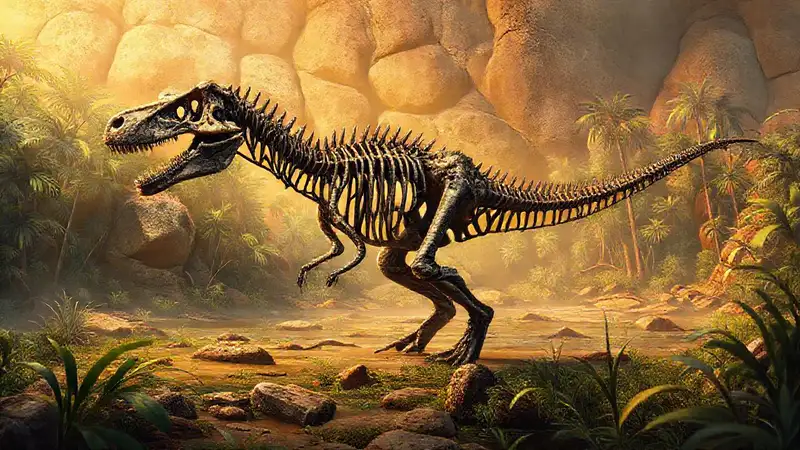The Mesozoic Era, often called the “Age of Reptiles,” is a pivotal period in Earth’s history, spanning roughly 252 to 66 million years ago. It followed the Permian extinction event and preceded the Cenozoic Era. This era witnessed a dramatic increase in reptile diversity and the rise of the dinosaurs, fundamentally reshaping terrestrial and marine ecosystems. Understanding the distinct characteristics of its three main periods – Triassic, Jurassic, and Cretaceous – is crucial for appreciating the evolutionary journey of life on Earth and the eventual impact of a catastrophic event that marked its end. The Mesozoic isn't just a single, uniform timeframe; rather, it's a sequence of evolving ecosystems with unique flora, fauna, and environmental conditions.
The Mesozoic was not without its fluctuations. Climate shifts played a major role in shaping the environment and influencing the distribution and evolution of organisms. Volcanic activity also contributed to significant changes, impacting atmospheric composition and global temperatures. The evolution of mammals, birds, and flowering plants, though initially small, steadily increased throughout the Mesozoic, laying the groundwork for the dominance of these groups in the subsequent Cenozoic. Careful study of the geological record reveals a complex, dynamic narrative of this incredible chapter in our planet’s story.
The Triassic Period (252-201 Million Years Ago)
The Triassic was a period of recovery following the Permian-Triassic extinction, the largest known mass extinction in Earth's history. The Earth’s climate was generally hot and dry, with vast deserts dominating much of the continents. Life was still relatively primitive, though reptiles began to diversify significantly. Early dinosaurs, like Herrerasaurus and Eoraptor, emerged during this time, representing the first steps in their long evolutionary lineage. Marine reptiles, such as ichthyosaurs and placodonts, were prominent inhabitants of the oceans.
This period was characterized by the formation of the supercontinent Pangaea, which significantly impacted global climate patterns. Volcanic activity was widespread, contributing to elevated levels of carbon dioxide in the atmosphere and subsequently fueling the warm climate. Plant life was dominated by ferns, cycads, and ginkgoes – primitive plant groups that thrived in the harsh conditions. The fossil record from the Triassic is relatively sparse in some regions, reflecting the challenges of fossilization in this dynamic and frequently disturbed environment.
The Triassic saw the development of early archosaurs – the group that would eventually give rise to dinosaurs, crocodiles, and birds. These early archosaurs were relatively small and often adapted to semi-aquatic or terrestrial environments. The End-Triassic extinction event, linked to massive volcanic activity in Siberia, dramatically reshaped the ecosystem, opening up new opportunities for the dinosaurs to become the dominant terrestrial vertebrates.
The Jurassic Period (201-145 Million Years Ago)
The Jurassic period marked a significant shift toward a warmer and wetter climate, largely due to the break-up of Pangaea. The continents began to drift apart, leading to increased ocean currents and precipitation. This resulted in the development of vast forests, particularly of conifers, ferns, and cycads. This environment fostered the rise of the truly massive dinosaurs – including Brachiosaurus, Stegosaurus, and Allosaurus – which became the rulers of the land.
The Jurassic witnessed a flourishing of marine reptiles. Plesiosaurs, ichthyosaurs, and marine crocodiles dominated the oceans, thriving in the warmer, more productive seas. Early birds, such as Archaeopteryx, also appeared during this period, showcasing the evolutionary link between dinosaurs and birds. The geological record of the Jurassic is rich and diverse, providing invaluable insights into the distribution of dinosaurs and other prehistoric life forms.
The Jurassic period is often considered the “Age of Giants” due to the impressive size of many of the dinosaurs that lived during this time. The dominance of dinosaurs began to solidify, and they rapidly diversified into a wide range of forms, occupying various ecological niches. The end of the Jurassic was punctuated by another extinction event, though less dramatic than the Triassic event, which paved the way for the continued evolution of dinosaurs into the Cretaceous.
The Cretaceous Period (145-66 Million Years Ago)

The Cretaceous period saw continued continental drift and a gradual cooling of the climate. The continents continued to separate, and the polar regions began to ice over. Flowering plants (angiosperms) began to emerge and rapidly diversify, transforming terrestrial landscapes. This represented a monumental evolutionary step, leading to increased biodiversity and shaping the ecosystems of the time.
The Cretaceous was characterized by the continued dominance of large dinosaurs, including iconic species like Tyrannosaurus rex and Triceratops. However, this period also witnessed the rise of mammals, which began to diversify and occupy niches previously held by reptiles. Marine reptiles, like mosasaurs and plesiosaurs, continued to thrive, along with ammonites - shelled cephalopods.
The Cretaceous culminated in the catastrophic Cretaceous-Paleogene (K-Pg) extinction event, caused by a massive asteroid impact in what is now the Yucatan Peninsula. This event wiped out approximately 76% of plant and animal species on Earth, including all non-avian dinosaurs, effectively marking the end of the Mesozoic Era and paving the way for the rise of mammals and the Cenozoic Era.
The Geological Framework
Throughout the Mesozoic, the Earth's geology played a crucial role in shaping the distribution of organisms and creating diverse habitats. The supercontinent Pangaea continued to break apart, leading to changes in ocean currents, continental climates, and the formation of new landmasses. Volcanic activity remained a significant factor, contributing to both climate change and the formation of new geological features, such as mountain ranges and sedimentary basins.
The sedimentary rocks deposited during the Mesozoic provide a wealth of information about the environments of the time. Fossilized plants and animals reveal details about the flora and fauna, while sedimentary structures reveal information about the depositional environments, such as rivers, lakes, and oceans. Paleomagnetic data helps to determine the positions of continents and the direction of magnetic fields, providing evidence of continental drift. By studying these geological records, scientists can reconstruct the past environments and understand the factors that influenced the evolution of life during the Mesozoic Era.
Conclusion
The Mesozoic Era, encompassing the Triassic, Jurassic, and Cretaceous periods, represents a truly remarkable chapter in Earth’s history. Each period showcases a unique set of environmental conditions and evolutionary trends, highlighting the dynamic nature of life on our planet. From the recovery of life after the Permian extinction in the Triassic to the age of giants in the Jurassic and the rise of flowering plants and mammals in the Cretaceous, the Mesozoic Era laid the foundation for the ecosystems we see today.
Ultimately, the Cretaceous-Paleogene extinction event served as a dramatic punctuation mark, extinguishing the dinosaurs and initiating a new phase in Earth’s history. Studying the Mesozoic is vital not just for understanding the evolution of life, but also for gaining insights into the Earth’s past climate, geological processes, and the potential consequences of large-scale environmental changes – lessons that remain profoundly relevant in the face of modern challenges.





Deja una respuesta